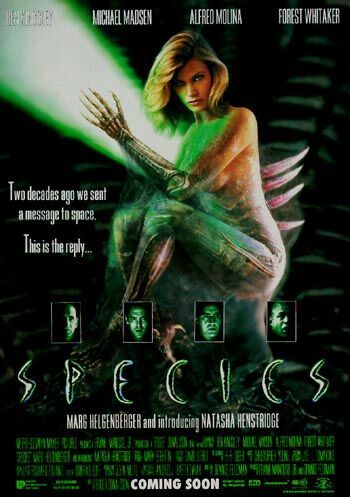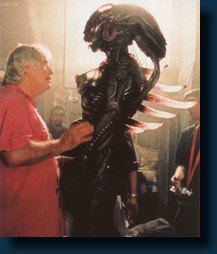Chupacabras Again
Posted by: Loren Coleman on October 30th, 2010

What a busy week! While getting ready for the free open house on Halloween at the International Cryptozoology Museum, reporters from Discovery.com, the Canadian Broadcasting System, the Portland Daily Sun, NBC’s Channel 6, and others wanted to talk this week. Also, the National Geographic News interviewed me about one of this year’s more popular topics.

National Geographic News has published a new article by Kar Than about the latest on Chupacabras theorizing here.
Here are some quotations they obtained from me:
“Evolution” of a Legend
Loren Coleman, director of the International Cryptozoology Museumin Portland, Maine, agreed that many chupacabra sightings—especially the more recent ones—could be explained away as appearances by mangy coyotes, dogs, and coyote-dog hybrids, or coydogs.
“It’s certainly a good explanation,” Coleman said, “but it doesn’t mean it explains the whole legend.”
For example, the more than 200 original chupacabra reports from Puerto Rico in 1995 described a decidedly uncanine creature.
“In 1995 chupacabras was understood to be a bipedal creature that was three feet [about a meter] tall and covered in short gray hair, with spikes out of its back,” Coleman said.
But, as if in a game of telephone, the description of the chupacabra began to change in the late 1990s due to mistakes and mistranslations in news reports, he said.
By 2000 the original chupacabra had been largely replaced by the new, canine one. What was seen as a bipedal creature now stalks livestock on all fours.
“It was actually a big mistake,” Coleman said.
“Because of the whole confusion—with most of the media reporting chupacabras now as dogs or coyotes with mange—you really don’t even hear any good reports from Puerto Rico or Brazil anymore like you did in the early days. Those reports have disappeared and the reports of canids with mange have increased.”
First Chupacabras: Monkeys or Movie Madness?
So what explains the original chupacabra myth?
One possibility, Coleman said, is that people imagined things after watching or hearing about an alien-horror film that opened in Puerto Rico in the summer of 1995.
“If you look at the date when the movie Species opened in Puerto Rico, you will see that it overlaps with the first explosion of reports there,” he said.
“Then compare the images of [actor] Natasha Henstridge’s creature character, Sil [picture], and you will see the unmistakable spikes out the back that match those of the first images of the chupacabras in 1995.”
Another theory is that the Puerto Rico creatures were an escaped troop of rhesus monkeys on the island, which often stand up on their hind legs.
“There was a population of rhesus monkeys being used in blood experiments in Puerto Rico at the time, and that troop could have got loose,” Coleman said.
“It could be something that simple, or it could be something much more interesting, because we know that new animals are being discovered all the time.”
About Loren Coleman
Loren Coleman is one of the world’s leading cryptozoologists, some say “the” leading living cryptozoologist. Certainly, he is acknowledged as the current living American researcher and writer who has most popularized cryptozoology in the late 20th and early 21st centuries.
Starting his fieldwork and investigations in 1960, after traveling and trekking extensively in pursuit of cryptozoological mysteries, Coleman began writing to share his experiences in 1969. An honorary member of Ivan T. Sanderson’s Society for the Investigation of the Unexplained in the 1970s, Coleman has been bestowed with similar honorary memberships of the North Idaho College Cryptozoology Club in 1983, and in subsequent years, that of the British Columbia Scientific Cryptozoology Club, CryptoSafari International, and other international organizations. He was also a Life Member and Benefactor of the International Society of Cryptozoology (now-defunct).
Loren Coleman’s daily blog, as a member of the Cryptomundo Team, served as an ongoing avenue of communication for the ever-growing body of cryptozoo news from 2005 through 2013. He returned as an infrequent contributor beginning Halloween week of 2015.
Coleman is the founder in 2003, and current director of the International Cryptozoology Museum in Portland, Maine.











The “Sil Theory” of Chupacabras metamorphosis in Puerto Rico should be easy to test now Loren.
With the recent release of Splice, a new incarnation of the genetically altered human form in the body of “Dren” such result in another such transformation. Of course, its all a question of personal taste, but from my experience, this is the sexiest “monster” ever to hit the CG world.
Perhaps a more disturbing question is why, after viewing Species, would someone imagine the Sil creature rather than Natasha Henstridge?
All fun aside, we have to ask if any actual evidence of livestock drained of blood actually existed and revisit the possible cause. Hysteria may have prompted locals to seek a frightening agent they could see and describe to displace one they could not.